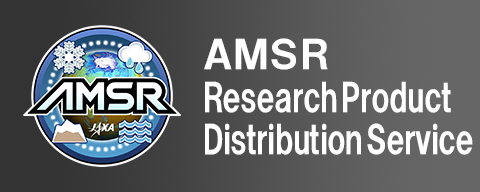Product Name
ID |
Stored physical quantity |
Region |
Spatial resolution |
Measurement range |
Release accuracy |
Standard Accuracy |
Remarks |
Brightness Temperature
(L1B)
TBB |
Brightness Temperature (6-89GHz) |
Global |
5-50 km |
2.7-340 K |
±1.5 K |
±0.3 K |
For ocean and clear sky areas, the difference in the global mean ascending and descending orbits after removing biases using the brightness temperature estimates from AMSR2 or numerical weather prediction models as the reference. |
| Brightness Temperature (166, 183GHz) |
Global |
10 km |
2.7-340 K |
±1.5 K |
±1.0 K |
Resampling Brightness Temperature
(L1R)
TBR |
Brightness Temperature (6-89GHz) |
Global |
5-50 km |
2.7-340 K |
±1.5 K |
±0.3 K |
For ocean and clear sky areas, the difference in the global mean ascending and descending orbits after removing biases using the brightness temperature estimates from AMSR2 or numerical weather prediction models as the reference. |
| Brightness Temperature (166, 183GHz) |
Global |
10 km |
2.7-340 K |
±1.5 K |
±1.0 K |
Total Precipitable Water
TPW |
Total Precipitable Water over Ocean |
Global over ocean |
15 km |
0-70 kg/m² |
3.5 kg/m² |
3.0 kg/m² |
RMSE equivalent to GPS and sonde |
| Total Precipitable Water over Land |
Global over land
* |
15 km |
0-70 kg/m² |
6.5 kg/m² |
3.5 kg/m² |
RMSE equivalent to GPS and sonde
*Excluding vegetation and cryosphere areas |
Cloud Liquid Water Content
CLW |
Cloud Liquid Water Content |
Global over ocean |
15 km |
0-1.0 kg/m² |
0.10
kg/m² |
0.05
kg/m² |
RMSE relative to optical sensors |
Precipitation
PRC |
Precipitation |
Global |
15 km |
0-20 mm/h |
Ocean 50 %
Land 120 % |
Ocean 50 %
Land 120 % |
Relative error to GPM/DPR and ground radar networks equivalent to 0.5 degree grid |
| Snow precipitate |
Global |
10 km |
0-4mm/h |
Ocean 130 % *
Land 200%* |
Ocean 130%*
Land 200%* |
Relative error against GPM/DPR equivalent to 0.5 degree grid. *1mm/month or more, evaluated by monthly integration. |
Sea Surface Temperature
SST |
6GHz
Sea Surface Temperature |
Global over ocean |
50 km |
-2 -35 ℃ |
0.8 ℃ |
0.5 ℃ |
RMSE relative to buoys |
10GHz
Sea Surface Temperature |
30 km |
0.6 ℃ |
| Multi-band Sea Surface Temperature |
30 km |
0.6 ℃ |
Sea Surface Wind Speed
SSW |
Sea Surface Wind Speed |
Global over ocean |
15 km |
0-30 m/s |
1.5 m/s |
1.0 m/s |
RMSE relative to buoys |
All-weather Sea Surface Wind Speed
ASW |
All-weather Sea Surface Wind Speed |
Global over ocean |
50 km |
0-70 m/s |
7 m/s |
5 m/s |
RMSE relative to dropsonde (wind speed 15 m/s or more) |
Sea Ice Concentration
SIC |
Sea Ice Concentration |
Polar region over ocean |
15 km |
0-100 % |
10 % |
10 % |
RMSE relative to optical sensors |
High-resolution Sea Ice Concentration
HSI |
High-resolution Sea Ice Concentration |
Polar region over ocean |
5 km |
0-100 % |
15 % |
15 % |
RMSE relative to optical sensors |
Soil Moisture Content
SMC |
Soil Moisture Content |
Global over land |
50 km |
0-40 % |
10 % |
5 % |
Absolute mean error relative to ground observations |
Snow Depth
SND |
Snow Depth
(Snow Water Amount) |
Global over land |
30 km |
0-100 cm |
20 cm |
20 cm |
Absolute mean error relative to ground observations |

